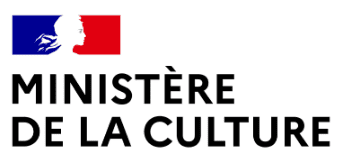Christophe Bisson
Le Sépulcre, in Caen. A former church converted into a centre for choreographic research, plunged into semi-darkness pierced by a few rays of raw light. On the ground, hundreds of photobooth pictures: anonymous men. Who are they, or were they? A woman choreographer moves them around. First perusing them, then, more and more frantically, as if to absorb them: seeking all the different ways to be one with them. The men, and one woman: how to interact between one and the many, between the present and the absent?
(Nathan Letoré)
- Other gems
- 2021
-
 Other gems
Other gems
- 2021
GLI UOMINI
Christophe Bisson
Interview with Christophe Bisson
The film takes place in a single location, with a series of photos that were found there. Can you tell us more about the place and the photos?
The Sepulcher is a former collegiate church founded in the 13th century in Caen, and is now run by the Choreographic Cooperative. The interior space is very strong due to its volume, its embedded columns, its medallions… its emptiness and its fullness. The photos were lying there, discarded in some boxes. In a way, we brought them back to life.
Beyond the photos, the only human figure is that of a dancer. Who is this dancer? What was her part in the creation of the project, and how did you work together?
Laura Simi is an amazing dancer with whom I share a real bond. There’s a real connection, which makes it very easy to work with her. I suggested that she might do something with the photomatons, but without any particular idea in mind. On the first day, we made a pile on the set and started innocently looking at the pictures. Laura is funny and mischievous. Her comments really made me laugh. She was imitating “military” talk. On the second day, she arrived at the Sepulcher and told me that she had hardly slept all night. Strangely, the faces of the men in the photomatons had haunted her. They had entered her, as if trespassing. She didn’t quite understand the effect of these pictures within her. I could feel that she was confused. This inner resonance was spontaneously translated into her improvisations through the motif of devouring photos, as if she were trying to introject them into herself. From then on, she engaged in a very surprising dialogue with these male effigies, as if she were reversing the virile-patriarchal relationship of male domination: It is she who leads the dance, while the men become tiny soldiers, toys in the service of her imagination, of her invention.
Your title proclaims “the men”. Why did you choose this title in Italian? And why men, when it is a woman who holds pride of place?
Simply because Laura is Italian and the rare words uttered in the film are expressed in her language. Through the pictures of tiny soldiers, Laura invests her body, her voice, her shouts, with something that belongs to her relationship, as a woman, with men. Once we’d finished filming, she made this surprising statement: to love one man, we must be able to love them all. I think that’s where the title comes from.
Interview by Nathan Letoré
-
 Other gems
Other gems
Technical sheet
France / 2021 / 12’
Original Version : French, Italian.
Subtitles : No Subtitles.
Script : Christophe Bisson.
Photography : Christophe Bisson.
Editing : Christophe Bisson.
Music : Patrice Grente.
Sound : Marylène Carre.
Casting : Laura Simi.
Production : Christophe Bisson (Particular).
Filmography : Notes d’un souterrain, 2018. Silencio, 2016. Lenz Élégie, 2015. Sarah(K.), 2014. Entrée des écuyères et des tigres, 2014.
- Autres films / Other gems






